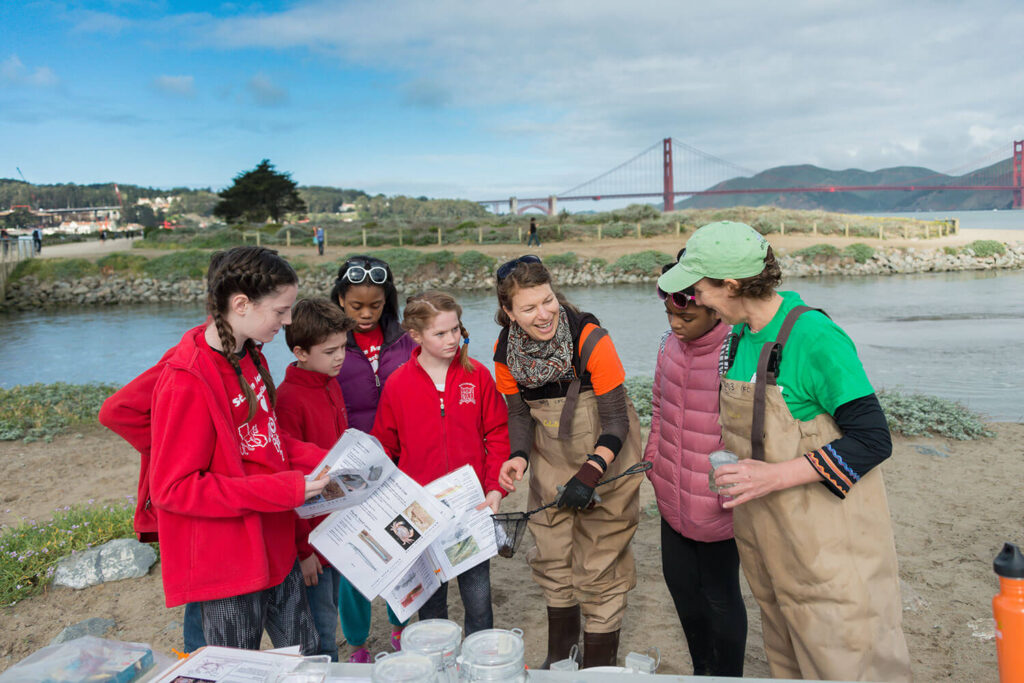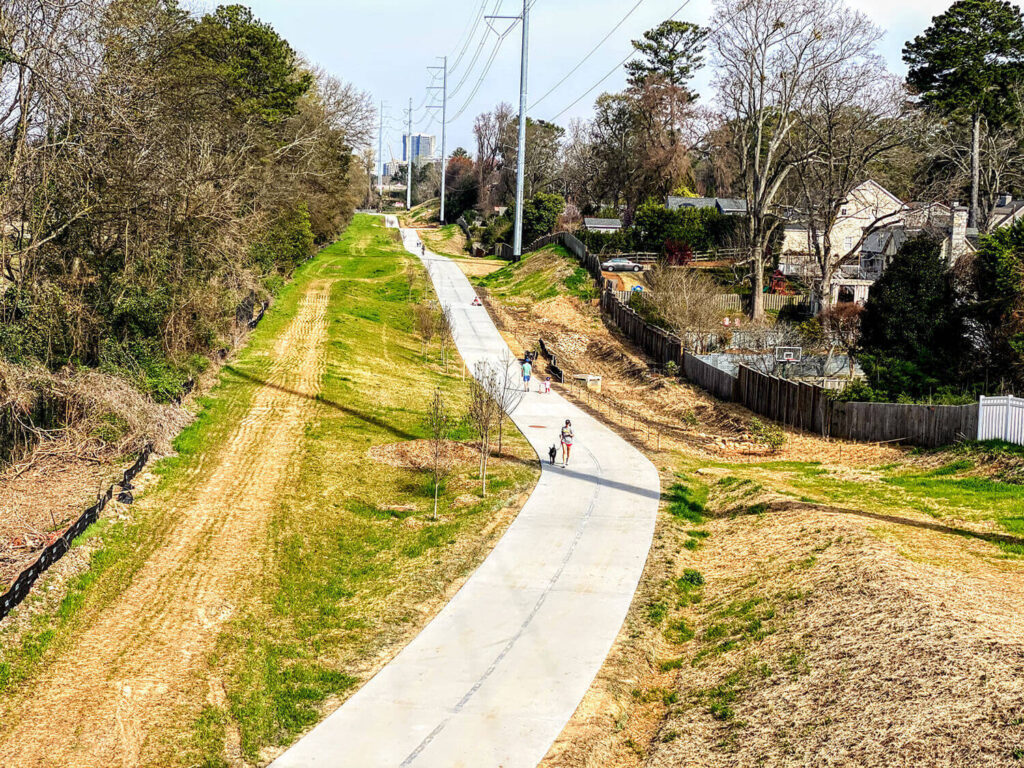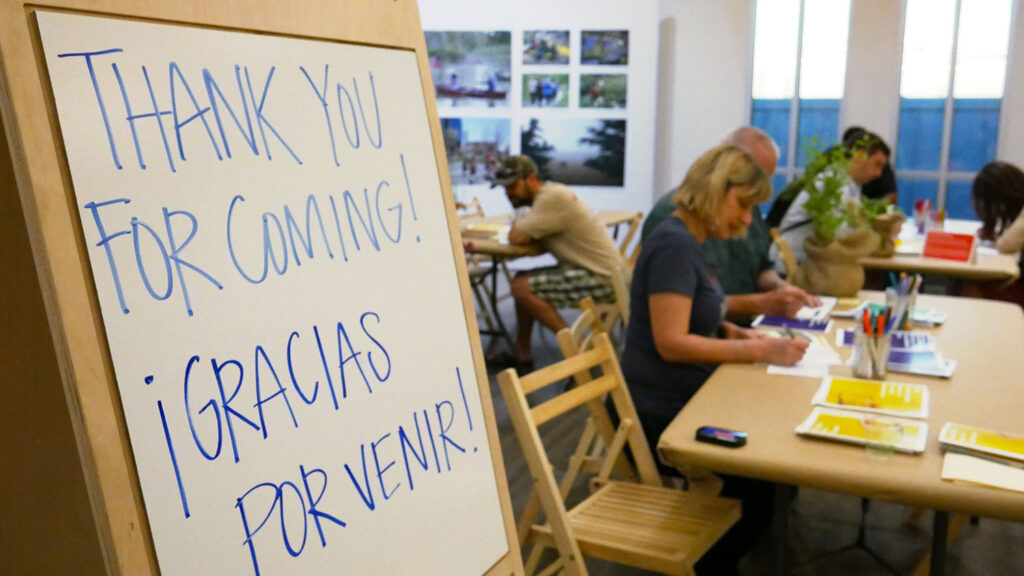Would you like to showcase your own work to embed equity in your infrastructure reuse project?
Engaging Young People through an Equity Lens

Golden Gate National Parks Conservancy established metrics to track progress on their efforts to engage more youth of color. Credit: Golden Gate National Parks Conservancy.
Get young people from San Francisco communities with a historic lack of access to high-quality public spaces involved. Focus on engaging local youth of color and young people from low-income households. These are the types of lofty goals that all too often float untethered from real impact. But Golden Gate National Parks Conservancy (GGNPC) is determined to make it a reality—and they have carefully established metrics to track progress.
GGNPC, which jointly operates Crissy Field with the National Park Service, started implementing new metrics of success with their Academic Internship Program in summer 2021. Each summer, they partner with three area colleges that serve diverse student bodies predominantly from the San Francisco Bay Area. They offer internships in natural resources, youth education, geographic information systems, and more. Students get technical training and mentorship, and build workplace and leadership skills.
In 2021, they decided to track the change in number of applicants compared to the prior year, and collect social and demographic data (for example, ethnicity, age, gender, education level). They also counted the number of interns from the Bay Area compared to non-local interns. Finally, they tracked the number of interns who qualified for and/or were receiving financial aid.
Within a few months, GGNPC was able to connect outreach activities to positive outcomes—with the numbers to back it up. For example, staff participated in school career fairs, hosted a webinar for interested applicants, and promoted the internships on social media and through partner networks. In 2021, the number of applicants increased by 22% compared to the year before. Of those, there was an increase in Asian youth by 32%, Hispanic/Latino youth by 25%, and Native American/American Indian youth by 4.7%. Of the interns hired, 71% were students who qualified for and/or received financial aid, and 65% were from the San Francisco Bay Area.
These numbers are helping the organization to tell a story about impact and better evaluate which activities produce results.
Project Org
Golden Gate National Parks ConservancyRelated Toolkit Section
Ensure ProgressRelated Tool
TRACK YOUR WORKGet young people from San Francisco communities with a historic lack of access to high-quality public spaces involved. Focus on engaging local youth of color and young people from low-income households. These are the types of lofty goals that all too often float untethered from real impact. But Golden Gate National Parks Conservancy (GGNPC) is determined to make it a reality—and they have carefully established metrics to track progress.
GGNPC, which jointly operates Crissy Field with the National Park Service, started implementing new metrics of success with their Academic Internship Program in summer 2021. Each summer, they partner with three area colleges that serve diverse student bodies predominantly from the San Francisco Bay Area. They offer internships in natural resources, youth education, geographic information systems, and more. Students get technical training and mentorship, and build workplace and leadership skills.
In 2021, they decided to track the change in number of applicants compared to the prior year, and collect social and demographic data (for example, ethnicity, age, gender, education level). They also counted the number of interns from the Bay Area compared to non-local interns. Finally, they tracked the number of interns who qualified for and/or were receiving financial aid.
Within a few months, GGNPC was able to connect outreach activities to positive outcomes—with the numbers to back it up. For example, staff participated in school career fairs, hosted a webinar for interested applicants, and promoted the internships on social media and through partner networks. In 2021, the number of applicants increased by 22% compared to the year before. Of those, there was an increase in Asian youth by 32%, Hispanic/Latino youth by 25%, and Native American/American Indian youth by 4.7%. Of the interns hired, 71% were students who qualified for and/or received financial aid, and 65% were from the San Francisco Bay Area.
These numbers are helping the organization to tell a story about impact and better evaluate which activities produce results.
Share this Case Study

